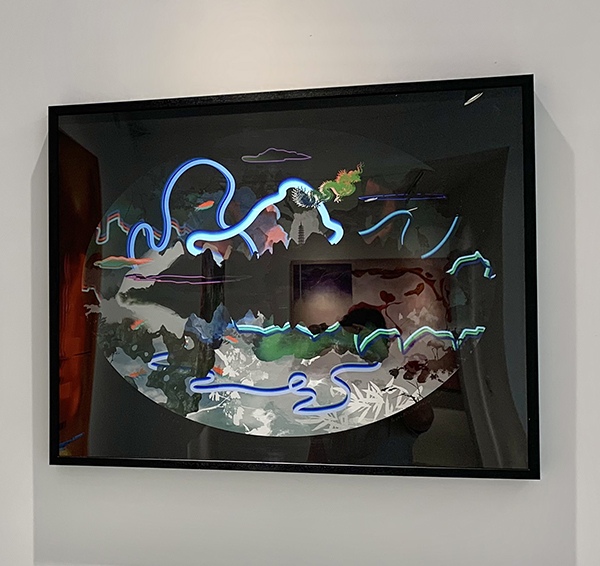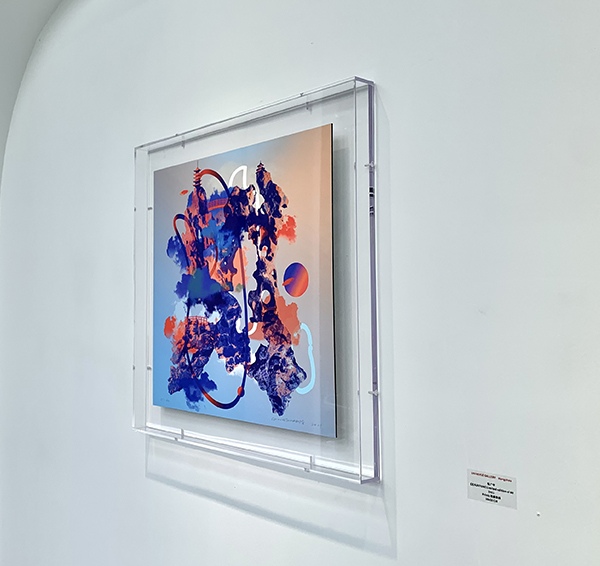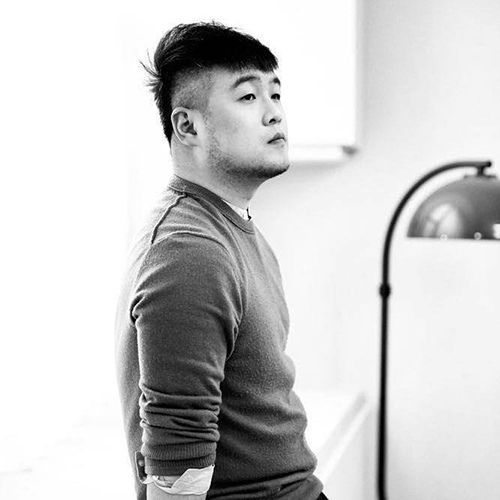
Elysium Paradise, Magnificent Mixed Media Art by Guang-Yu Zhang
An accomplished artist in China, Guang-Yu Zhang demonstrates how he combines traditional art with modern techniques and successfully applies his visual lexicon in creating magnificent pieces of art. With a strong foundation in traditional art training and a fluid application of digital formats, he is able to transcend the old to the present, indulging the audience in a visual feast of creative allegories, diffusion of lyricism, motifs, and propitious symbolism from Ancient China. His animation art further elevates this visual sensation to a higher level of perception with motion and sound.
Contrary to the traditional Chinese paintings which stress the importance of black and white in balance, he tends to fill his canvases with colors and objects. His interplay of colors is both intricate and bold. The vivid colors seem to carry nearly spiritual connotations accentuating a world of eternal paradise where all beings live in harmony. This Elysium world is devoid of boundaries where “earth and sky intertwine, where light and darkness are one and the same.”
Guang-Yu’s artistic talents and innovative approach have not gone unnoticed by well-known brands such as Hennessy, Carlsberg, and LVMH. Next month, his animated art will appear in one of Asia’s largest NFT (Non-fungible tokens) art platforms.
We are very excited to be able to get a hold of Guang-Yu and learn about his path to success.
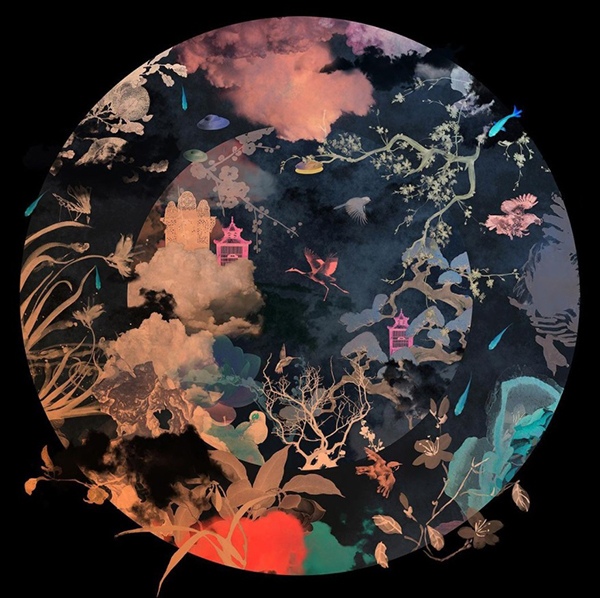
Q: Your artwork is magnificent; its presentation is complex. Please share with us your artistic training.
A: When I was a little child, I had started to learn the techniques about academic drawing and paintings in western art, some basic skills and methods about how to express the color in the works, also had a class about classical Chinese painting skill training and theory study in the art school in China. Like most artists, my study experience was the foundation of my career.
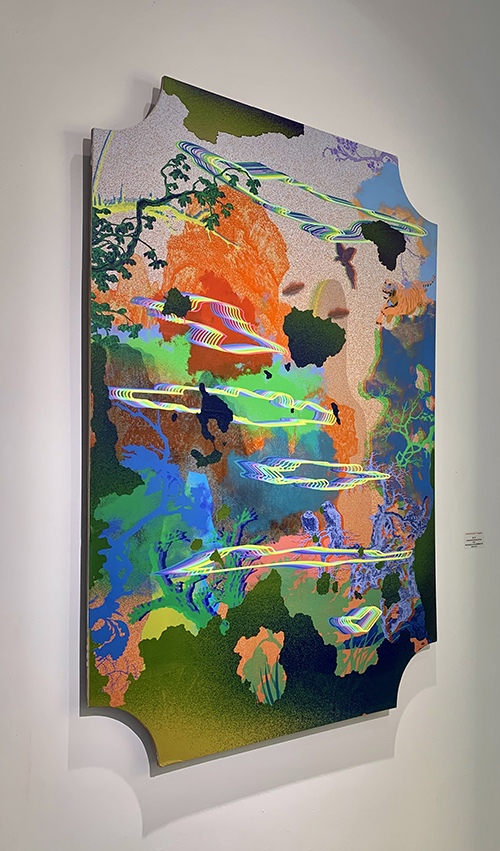
Q: What medium do you use to accomplish your art? How would you categorize your artwork?
A: In the very early stage, I only used oil paint to realize my idea on canvas or linen. While I graduated from college, I got different jobs in different pathways in this large creative industry. These work experiences inspired me, hence I tried to use mixed techniques and skills on accomplishing my artworks.
Now, I would start up with a digital draft on Photoshop first, to adjust and confirm the composition with the colour combination. When the digital draft is done, my team and I will work on different processes. The motion graphic team will animate the digital draft, I will direct them and visual on this stage. On the other hand, I and my handcrafted assistant will paint on the panel or canvas, making the hand-painted work to be the same as the digital draft. Finally, our digital media specialist will be coding the digitally animated work and the physical painting to be an AR mixed media work.
But not all works like this, some of the drafts would be more appropriate to be developed as a pure digital animation, therefore, we will consider making it as an NFT artwork (Editorial: An NFT is a digital asset that represents real-world objects like art, music, in-game items, and videos..)
If some of the drafts look more like paintings, we will make it a unique hand-painted work. Also, I produce original limited edition fine art prints.
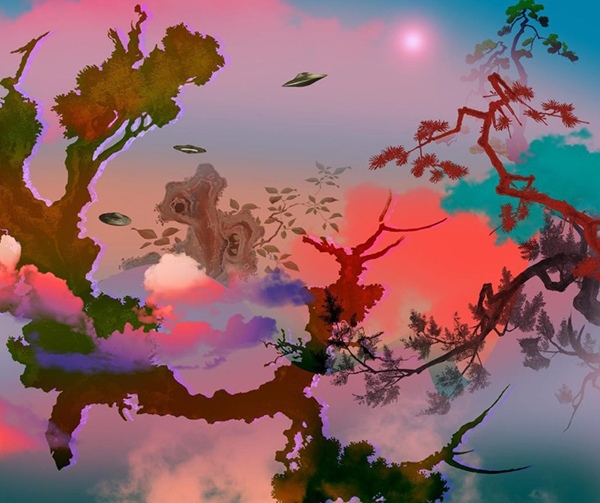
Q: Your artistic talents have not gone unnoticed by some of the major brands in the west. Please tell us some of the brands you have collaborated with and your role in these collaborations.
A: The brand collaborations are fairly valuable to an earlier stage artist. These major brands add reputation to the young artist, allowing the artist to be more recognisable. We see that brands promote the artists to more audiences who do not necessarily come from the art industry.
On the other hand, the collaboration work is not just a fine art job, it involves different kinds of design work, advertising, PR, marketing, productive process and adjustments, and legal support which is a multiple-collaborative networking system. To be honest, I have learned a lot from these project colleagues, people who are working in different positions and so have their own perspectives; everyone pushes the project forward together, that’s the reason why we can see the projects are successfully launched. When an artist takes part in a collaboration job, she/he would have a chance to obtain a lot of valuable experience.
And, brands also “star-ised” an artist when they promote the collaboration, such as Hennessy and Carlsberg.
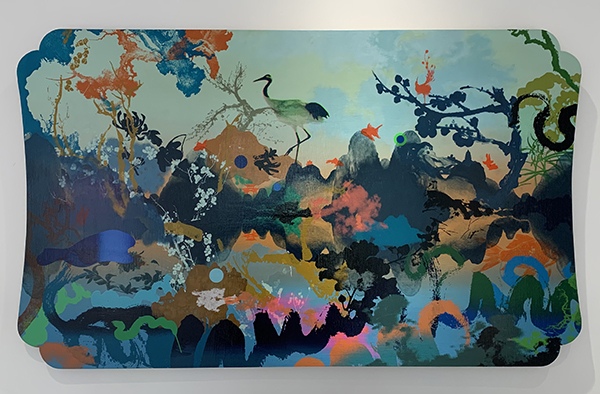
Q: Chinese motifs are important elements in your artwork. Please tell us about the thought process during composition and when combining traditional motifs with modern styles. Also, your use of colors is so exquisite and unique. Please tell us about your personal beliefs regarding color selection; what are you looking for when applying colors?
A: During my second year in university, I was called to submit work for a gallery exhibition “Dragons in the Lion’s Den ” which was curated for presenting a group of overseas Chinese artists. I was submitting an oil painting in the Chinese ink painting style to the exhibition. During the opening party, many British art lovers and collectors showed their strong interest in the motif in my painting, which seemingly provides them a reference for their imagery about foreign Oriental culture.
I realised that a specific culture, as an object, had multiple identities and characteristics that could be recognised by different people who had different perspectives, specific experiences and sights. Hence I started to research the development and relation between cultures and histories in both Western and Eastern worlds.
I found Chinese culture and art were adapted by Europeans in the 17-18 centuries which was the Chinoiserie style, a style nourished from a sort of semi-fictional European history.
Also, back to 1990-2000s in China, a group of artists was getting renown – Wang Guangyi, Zeng Fanzhi, Zhou Chunya, Liu Xiaodong, and some first-generation Chinese contemporary art stars, most of whom were influenced by some famous Western artists or genres. We can try to seek the clues that connect political pop with Wang Guangyi, Lucian Freud and Liu Xiaodong. The original Western motif and brushstrokes had smoothly localised in another land, the results had also been regarded as a part of contemporary Chinese art history.
We can see that cultures may not just develop separately, they influence each other; people who exist in this world are literally connected. Therefore, how do we re-examine conceptions about race, nation, culture, identity?
The study experience also made me realize that culture develops plastically. From there I pointed my attention to traditional Chinese ink painting. I was thinking that maybe I could create something from it in a new way of contemporary sense and method.
In this regard, I had started to emulate the finishing of ink-based art in the portrayal of idealized landscapes, flipping the script by integrating the Wester approach of occupying all available negative space with more saturated elements than is traditionally the case in Oriental art.
Regarding the colours in my works, this is based on my emotions at the time and stems from my personality.
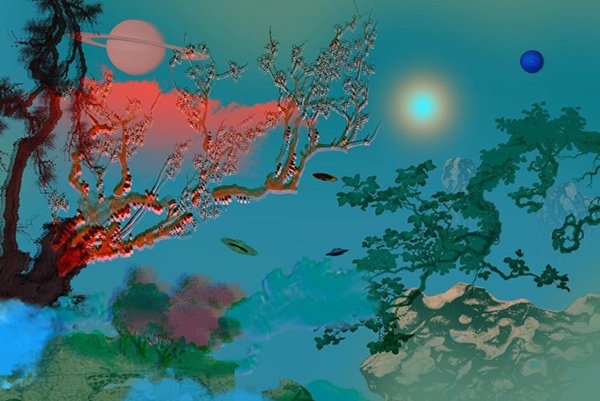
Q: Is there any artist or literature that inspires your artwork? Some of your artworks depict an Elysium world. Please take us to this world and describe it.
A: I have native Chinese roots; our nation has a long history. So it would be easy to pick something up from it – from the stories, the literature could be a resource for contemporary art creation. The Fairyland series has now been recognised as my signature style. Visually, it depicts an Elysium.
When I was a junior school student, I was quite interested in reading ancient Chinese fantasy stories composed by such creators as Tao Yuanming in Jin Dynasty, or Pu Songling in the Qing Dynasty. I am the type who is easily attracted to unrealistic imagery and stories. I think that it is my nature that leads me to actually express my surreal mind through contemporary visual art materials.
Q: Do you have any future plans or projects you would like to share with our audience?
A: Yes, we brought eight pieces of artwork including paintings, prints, and animations to our recent group exhibition at the Universe Gallery in Hangzhou city this week (exhibition duration: from 10th July to 23rd August).
We will also collaborate with one of the largest NFT art platforms in Asia to promote our very first piece of digitally animated work at the beginning of August.
On the other hand, a brand new collaboration project from LVMH will be launched in mid-September. However, we understand that the brand has its secret traditions so I cannot expose the project details at this moment.
Anyway, we will see it very soon.
My agent and I are planning a solo exhibition in mid-late Q4, which could be in Paris. That would be super exciting; we will exhibit many different types of artworks at that exhibition.
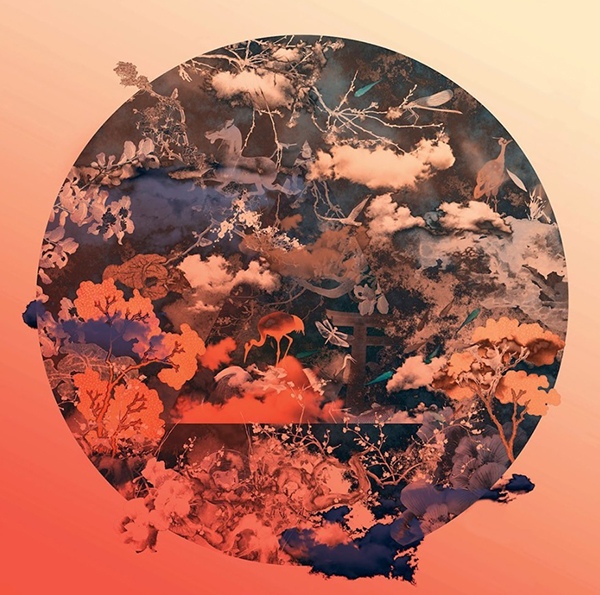
We are grateful for Guang-Yu’s time sharing his creative methods melding traditional and modern styles. Through him, people can immerse themselves in a fairyland in mediums. We thank Guang-Yu and wish him great success at the vanguard of revolutionizing the art world.
Guang-Yu’s Instagram
